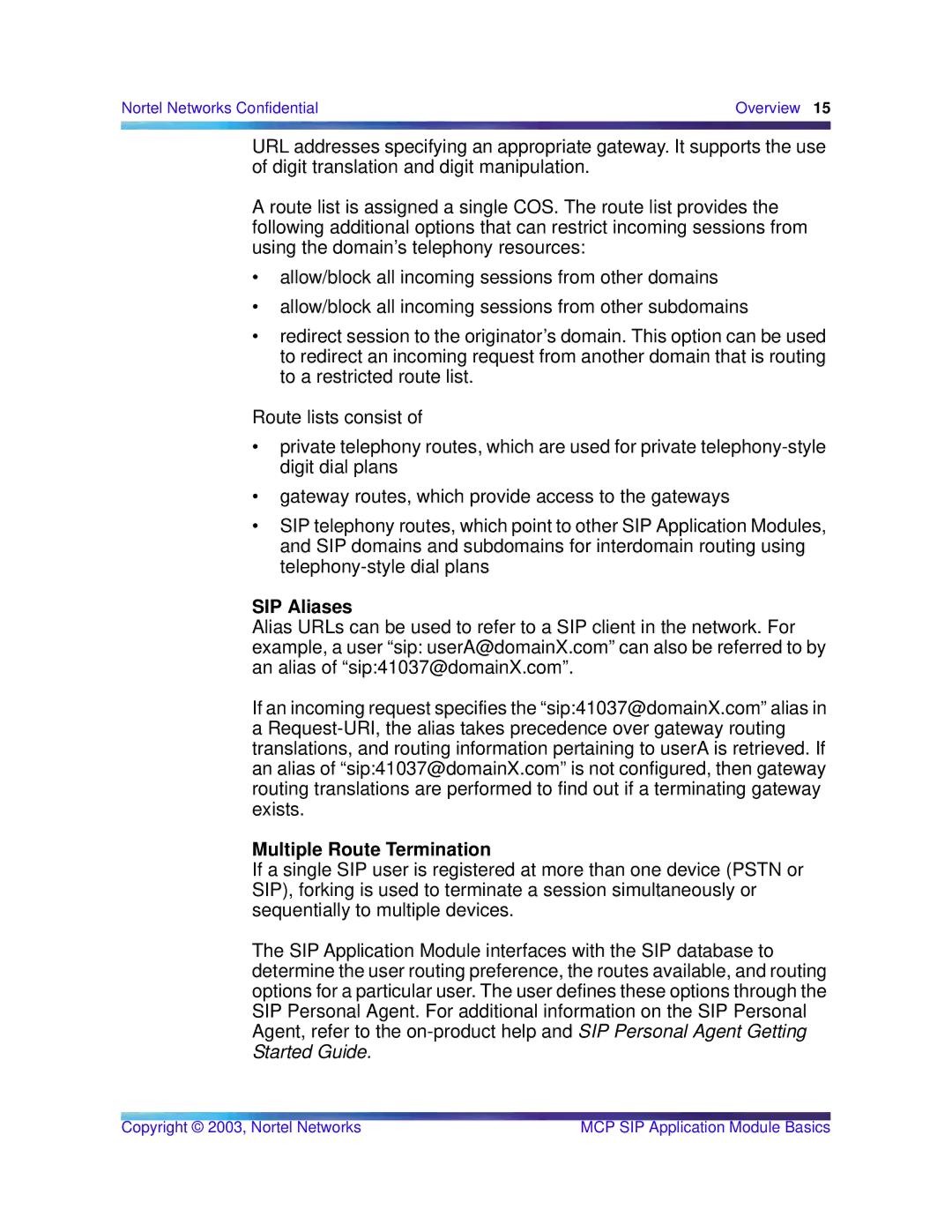
Nortel Networks Confidential | Overview 15 |
|
|
URL addresses specifying an appropriate gateway. It supports the use of digit translation and digit manipulation.
A route list is assigned a single COS. The route list provides the following additional options that can restrict incoming sessions from using the domain’s telephony resources:
•allow/block all incoming sessions from other domains
•allow/block all incoming sessions from other subdomains
•redirect session to the originator’s domain. This option can be used to redirect an incoming request from another domain that is routing to a restricted route list.
Route lists consist of
•private telephony routes, which are used for private
•gateway routes, which provide access to the gateways
•SIP telephony routes, which point to other SIP Application Modules, and SIP domains and subdomains for interdomain routing using
SIP Aliases
Alias URLs can be used to refer to a SIP client in the network. For example, a user “sip: userA@domainX.com” can also be referred to by an alias of “sip:41037@domainX.com”.
If an incoming request specifies the “sip:41037@domainX.com” alias in a
Multiple Route Termination
If a single SIP user is registered at more than one device (PSTN or SIP), forking is used to terminate a session simultaneously or sequentially to multiple devices.
The SIP Application Module interfaces with the SIP database to determine the user routing preference, the routes available, and routing options for a particular user. The user defines these options through the SIP Personal Agent. For additional information on the SIP Personal Agent, refer to the
Copyright © 2003, Nortel Networks | MCP SIP Application Module Basics |
